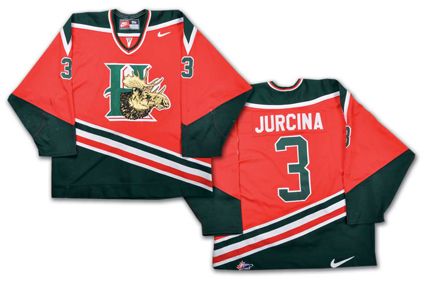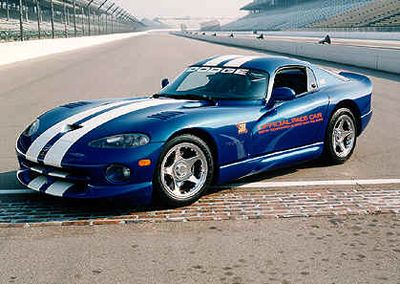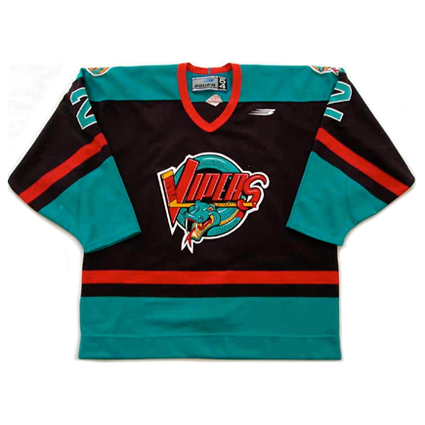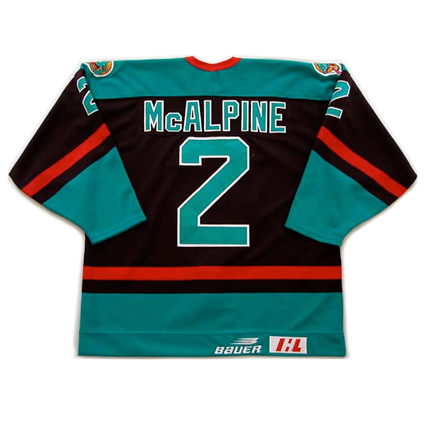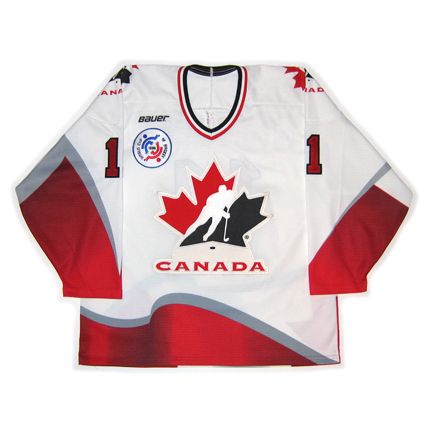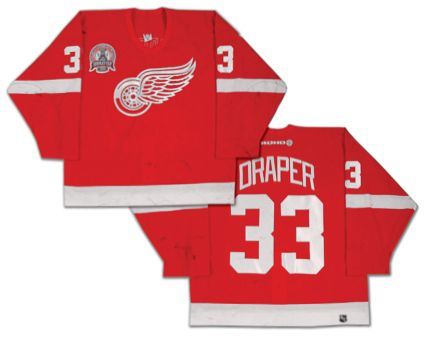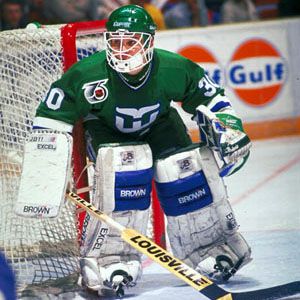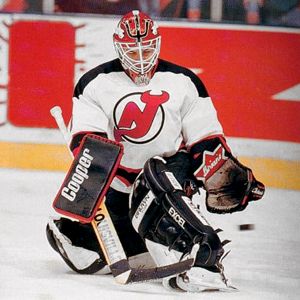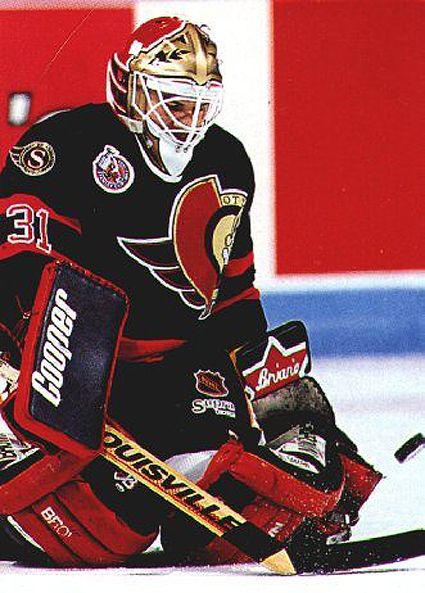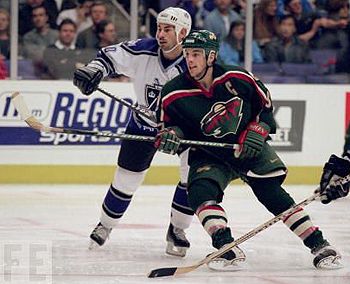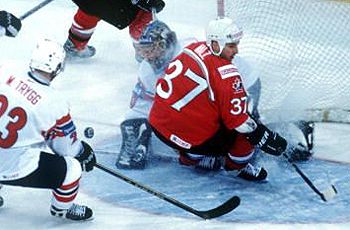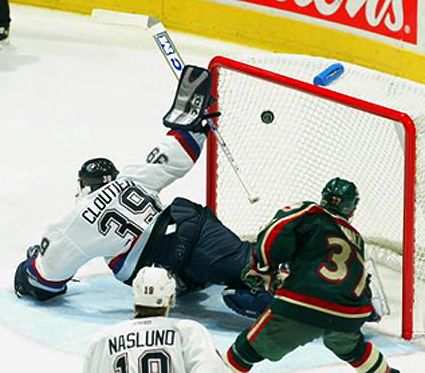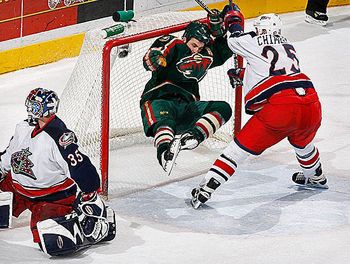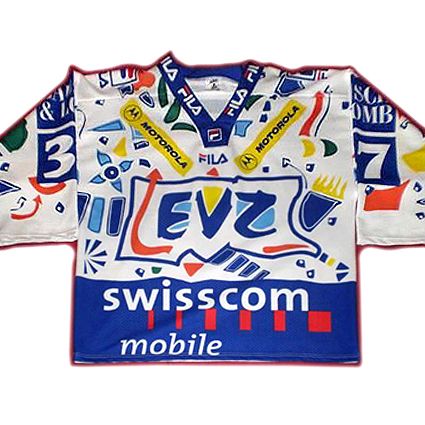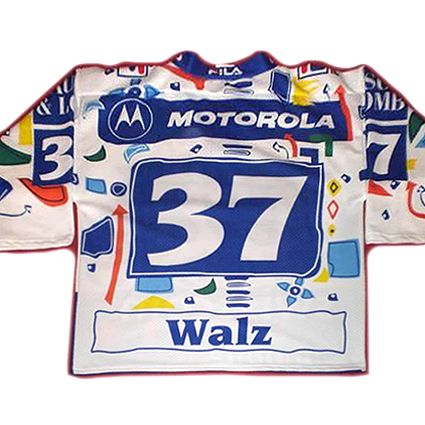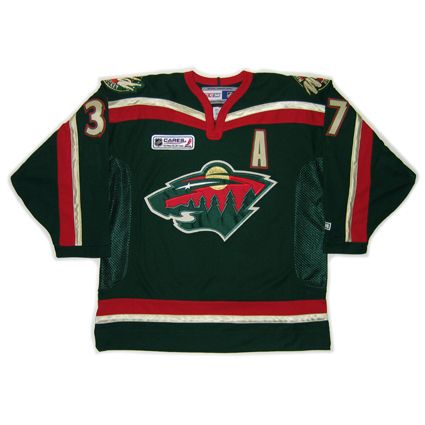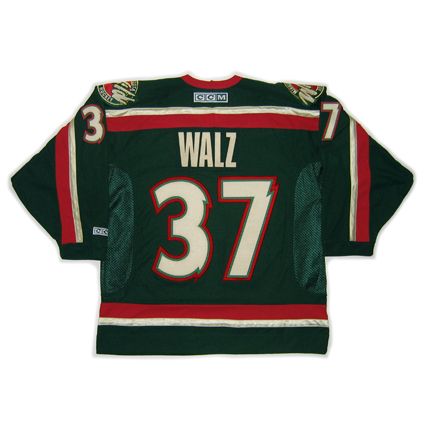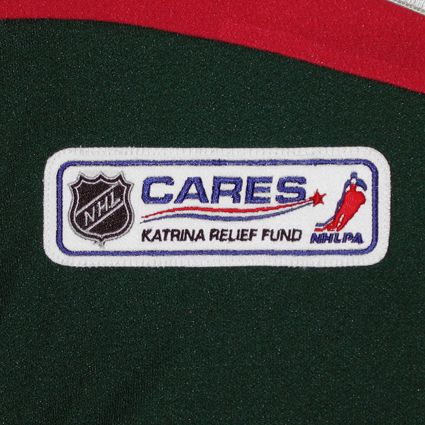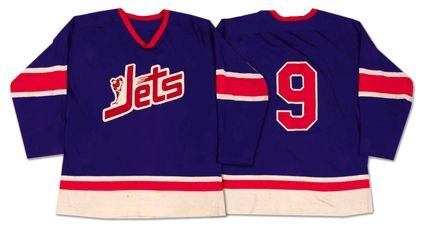Saturday, July 3, 2010
2002-03 Halifax Mooseheads Milan Jurcina Jersey
July by the Numbers crosses the Canadian border for jersey #3 today.
Founded in 1994, the Halifax Mooseheads, the Mooseheads were the idea of Harold MacKay, a regional sales manager for Moosehead Breweries, who felt the time was right to obtain a franchise for the Quebec Major Junior Hockey League, one of three major junior hockey leagues across Canada.
Halifax had teams in the American Hockey League prior to the formation of the Mooseheads, and when the Citadels relocated to Cornwall, the time seemed right to try major junior hockey rather than minor pro hockey. With Moosehead Breweries President and CEO Derek Oland on board with the plan and the vital financial backing, the Mooseheads came to be in time for the 1994-95 QMJHL season despite overcoming the logistical difficulties of all the league's other teams being located exclusively in Quebec at the time.
Players from that first season, in which the Mooseheads qualified for the playoffs, to make an impact in the NHL were goaltender John-Sebastien Giguere and Jody Shelley.
John-Sebastien Giguere
More future NHL players arrived, with Marc Chouinard coming in 1995, Alex Tanguay in 1996 and Ladislav Nagy in 1998.
Alex Tanguay
The Mooseheads were chosen to host the Memorial Cup in 2000. It was an exciting time for the Mooseheads as goaltender and future NHLer Pascal Leclaire, aided by a pair of hat tricks by Ramzi Abid, defeated WHL champions Kootaney Ice and OHL champs the Barrie Colts in their first two games. The success of their hosting the Memorial Cup led to Halifax being chosen as host of the 2003 World Junior Championships.
The clubs best season came in 2002-03 when they had their only 100 point season when a 44-15-10 record gave them 101 points to win the Maritimes Division. The Mooseheads made the QMJHL's playoff championship final for the President's Cup for first time that season, falling in seven games.
They returned to the President's Cup Finals again in 2005, only to run into the buzzsaw that was the Sidney Crosby led Rimouski Oceanic.
The club has now retired the numbers of Tanguay (#18), Shelley (#25) and Giguere (#47) and Brandon Benedict is the team's all time leading scorer, with 303 points from 1998 to 2003, 88 points more than second place Brandon Reid and 89 more than Tanguay.
Today's featured jersey is a 2002-03 Halifax Mooseheads Milan Jurcina Jersey. This jersey draws it's influences from the Pittsburgh Penguins and their innovative pointed shoulder yoke and the Mighty Ducks of Anaheim's groundbreaking diagonal waist striping in an attractive forest green and red color palette.
Our video section today consists of the Halifax Mooseheads 2010-11 season promotional film, highlighting the passion, energy and excitement of Canadian major junior hockey, followed by last season's film.
Labels:
Halifax Mooseheads,
QMJHL
Friday, July 2, 2010
1999-00 Detroit Vipers Chris McAlpine Jersey
July by the Numbers continues onto jersey #2.
Back in 1969, the Salt Lake Golden Eagles were founded and played in both the WHL and CHL prior to moving to the IHL in 1984. The team was sold in 1994 to Palace Sports and Entertainment, who owned the Detroit Pistons of the NBA, who relocated the club to the Detroit area to play in The Palace of Auburn Hills in time for the 1994-95 season.
A sponsorship agreement with the Chrysler Corporation led to the franchise being named the Detroit Vipers after Chrysler's Dodge Viper model.
The Vipers were an immediate hit at the box office, breaking the IHL attendance record in their first season with an average of 17,000 per game, something a number of NHL clubs would love to duplicate.
Led by Daniel Shank's 44 goals and Peter Ciavaglia's 81 points, the Vipers won the league's Northern Division, but were ousted in round 1 of the playoffs.
They again led the league in attendance in 1995-96 when Lonnie Loach led the team with 86 points. They defeated Indianapolis to advance to the second round of the playoffs before bowing out.
1996-97 saw the arrival of Russian Sergei Samsonov and IHL All-Star Stan Drulia to support Ciavaglia and Todd Simon, who led the team with 72 points each. Drulia followed with 71 and Samsonov was named Rookie of the Year following his 64 point campaign. The Vipers won the North Division with a league-best 122 points and entered the post season as favorites for the title.
Goaltender Rich Parent, who brought a 31-13-4 mark into the playoffs, guided the team past the Michigan K-Wings, the Quebec Rafales and the Cleveland Lumberjacks to reach the Turner Cup Finals against the Long Beach Ice Dogs. The Vipers won Game 1 at home 5-3, but lost Game 2 3-0. They took Games 3 and 4 in Long Beach, but the Ice Dogs stayed alive by winning Game 5 at home 2-1. Back on home ice for Game 6, Detroit clinched the championship with a 2-0 blanking of the Ice Dogs, led by Ciavaglia's 33 playoff points in 21 games.
1997-98 will be remembered for a one off appearance by the nearly 70 year old Gordie Howe, which made him the only player to appear in a professional game in six different decades.
The Vipers again won their division and were led by Dan Kesa and Steve Walker in points with 77 and 76 respectively. Jeff Reese took the bulk of the goaltending duties and in 46 games went 27-9-8. The team returned to the finals again, but despite taking a 3 games to 2 lead, lost the final two games to the Chicago Wolves.
Their success on the ice continued in 1998-99 when they scored 100 points in the standings for the fifth straight season, the first professional team to do so in their first five seasons. Drulia led the team with 75 points. The playoffs saw them reach the conference finals before losing in overtime of Game 7.
The Palace Sports and Entertainment organization purchased the Tampa Bay Lightning of the NHL in 1999, which had a tremendous adverse effect on the Vipers, where were now the Lightning's top minor league affiliate. The struggling Lightning called up many of the Vipers better players throughout the season, plummeting the once strong and stable Vipers to the depths of the league, where they finished last with 52 points, 26 less than the second-worst team. Walker's 46 points led the club, his low total a reflection of the state of the franchise.
2000-01 was a repeat of the previous season, as Detroit again managed only 52 points in the standings, a distant last in the league. Martin Cibak was the leading scorer with just 38 points.
The Vipers were now last in league attendance and the IHL was in deep trouble as a league as well. Only four teams had NHL affiliations, travel costs had risen as the league expanded and finally the league folded after the 2000-01 season after 56 years of operation. Six of the 11 remaining IHL clubs survived by joining the AHL, but the Vipers were not included as one of the six and ceased operations on June 4, 2001 when the IHL ended for good.
The story of the Detroit Vipers is a melancholy one, flying high in attendance and in the standings, setting records for success on both fronts and winning a championship, followed by a complete collapse both on the ice and at the box office in two short seasons, flaming out like a shooting star.
Today's featured jersey is a 1999-00 Detroit Vipers Chris McAlpine jersey. While the Vipers were a success on the ice for the majority of their existence, their jerseys were not.
Unfortunately the team relocated to Detroit at a time when the color palette of sports was changing due to the commerical success of the San Jose Sharks teal jerseys, first introduced in 1991.
The Vipers brash color scheme included the trendy 90's colors of dark eggplant and aqua for their jerseys, with garish red striping. Add in the overly complicated Vipers logo and you are left with one seriously ugly eyesore of a jersey that was neither classy, timeless or attractive in any way. And you should see the font they originally used in 1994-95 for the numbers. Terrible! Fortunately Gordie Howe wore the home white version of the jersey, which was somewhat less appalling.
Today's video begins with a look at the madness and mayhem of minor league hockey. Perhaps all the hard hits and fights were a result being angry about having to wear those horrible colored jerseys.
This next video was produced by the team and given to season ticket holders which celebrates their Turner Cup Championship in 1997.
Labels:
Detroit Vipers,
IHL
Thursday, July 1, 2010
1996 Team Canada Martin Brodeur Jersey
With the lack of significant historical events in hockey history in July, we have decided to reprise a little different approach to the heart of summer. Every day in July we are going to feature a jersey whose number on the back matches the current date.
Simple, eh?
It's a chance for us to showcase some jerseys that frankly aren't related to a Stanley Cup victory, milestone goal or even a player's birthday. We call it "July by the Numbers".
So, for July 1st, we begin at the beginning and kick things off with a jersey that carries the #1, and you just knew it was going to be a goaltender, didn't you?
July 1st is "Canada Day", which celebrates the enactment in 1867 of the British North America Act which united New Brunswick, Nova Scotia and the Province of Canada, which was comprised of what would be divided into Ontario and Quebec as part of the process, into a single country.
On June 20, 1868, the Governor General issued a proclamation asking for Canadians to celebrate the anniversary of the confederation. It became an official holiday in 1879 and was originally called "Dominion Day". As most residents considered themselves to still be primarily British, the holiday was not observed with any official celebration until 1917 and not widely observed as a uniquely Canadian holiday until as recently as 1958 when the government began to organize Dominion Day celebrations with a military parade in full dress uniform, called "Trooping the Colour", on Parliament Hill, followed by a band concert and fireworks display.
Dominion Day reached an important milestone in 1967 with the countries centennial, by which time Canadians became more proud of their independence from Britain. Televised concerts and other events from the nation's capital of Ottawa raised the profile of the event, while the government began to promote Dominion Day beyond the capital by giving grants to cities across the country to help fund local events.
While many people had began calling July 1st "Canada Day" informally, the new name was officially adopted in 1982. Today communities across Canada will celebrate with festivities such as parades, carnivals, picnics, air shows, concerts and fireworks, with the organized events on Parliament Hill the main event, with Queen Elizabeth sometimes in attendance, as she will be today in 2010, her first appearance since 1997.
On the jersey front, while the hockey season is completed by July 1st, the Toronto Blue Jays baseball club annually wears a special red jersey on Canada Day.
Today's featured jersey is a 1996 Canada National Team Martin Brodeur jersey, worn during the inaugural 1996 World Cup of Hockey. While you may be more accustomed to seeing Brodeur wear his more familiar #30, veteran Bill Randford was also on the Canadian roster for the tournament and wore the #30 based on his greater seniority.
This "waving flag" style jersey is one of the most attractive national team jerseys and features the larger 4 inch size 1996 World Cup of Hockey patch used by the teams that wore Bauer jerseys. Only Canada wore the patch on their chest, while all the other teams in the tournament wore their patches on the left sleeve.
Our video section begins with a salute to canada from Flippy Cat.
We know you want to be a Canadian. After watching this, you will agree too.
To sum up what it is to be Canadian, we present Joe.
No mention of Canada would seem complete without the man who penned "The Good Old Hockey Game", Stompin' Tom Connors.
Labels:
Canada
Wednesday, June 30, 2010
2001-02 Detroit Red Wings Kris Draper Jersey
On this date in 1993, the Detroit Red Wings acquired Kris Draper from the Winnipeg Jets for "future considerations".
"We ended up giving them a buck," said Red Wings executive Jim Devellano. "Doug MacLean actually did that deal," Devellano recalls. "He was our assistant general manager at the time, and he was running our farm team at Adirondack. Doug knew Draper was a good minor-leaguer. So Draper went to Adirondack fro three-quarters of a year and then came up to us."
In a most unusual career path, Draper, then age 18, played for the Canadian National Team in 1988-89 and 1989-90 for two full seasons of 60 and 62 games, which included two trips to the World Junior Championships. Following his first season with the National Team, Draper was drafted at the end of Round 3, 62nd overall, by the Winnipeg Jets.
The next season he played seven games for the Moncton Hawks of the AHL, made his NHL debut with three games for the Jets and then, after having already played in the AHL and NHL, made his junior hockey debut with the Ottawa 67's of the OHL, the exact opposite of the normal feeder system path taken by 99.9% of all players.
He spent the next two seasons with Moncton while squeezing in 10 games with the Jets in 1991-92 and seven in 1992-93. Having now played only 20 NHL games in the four years since he was drafted, he was considered an expendable minor-leaguer and sent to the Red Wings in return for one dollar - not even enough to purchase a new puck.
The Red Wings sent him to their top minor league affiliate in Adirondack, also in the AHL, for 46 games to start the 1993-94 season before he was called up for the second half of the season by Detroit, scoring 13 points in 39 games 0n a checking line with Kirk Maltby and either Joey Kocur or Darren McCarty. This began a long term relationship with the Red Wings, as Draper filled a vital, if less glamourous, role on the Red Wings roster at a time when the Red Wings, under the leadership of coach Scotty Bowman, who arrived the same season as Draper, evolved from first playoff exits to championship contender.
Never expected to be a goal scorer, it would take Draper nine seasons with Detroit until he would score even 30 points, and to date has but one season (2003-04) in which he reached 40 exactly, which included the only 20 goal season of his career when he netted 24, nine more than his next highest. And what was Draper's reward for the best offensive season of his career? Being named with winner of the Selke Trophy for the Best Defensive Forward of the year.
After a loss in the finals in 1995 and the confrence finals in 1996, Detroit won their first Stanley Cup in 42 years in 1997. Following the championship, Draper gave the Red Wings owners Mike and Marian Illitch a dollar and said, "Here you go. Investment paid in full!"
The Red Wings would go back to back by taking the title again in 1998. In Bowman's last year at the helm, Detroit won it all again in 2002 and returned to the finals again in 2008 to win the fourth Stanley Cup of Draper's career.
He has now become only the 5th player in Red Wings history to play in 1,000 games and his longevity has enabled him to move into the top 25 scorers in club history despite his modest annual point totals. He currently sits at #23 with 350 points. His 212 playoff games are second all-time to Nicklas Lidstrom's 247.
Not a bad investment for a dollar.
Draper is also a eager to play for Team Canada when possible. Despite the limited opportunities to compete in the World Championships due to the Red Wings frequent long runs deep into the playoffs, Draper has skated for Canada in the World Championships in 2000, 2001, 2003 when he earned a gold medal, and 2005, earning a silver medal, whenever the Red Wings suffered an unexpectedly early playoff exit when many players would chose to stay home following the long grind of an NHL season and the disappointment of a first round playoff defeat.
He was also chosen as a member of the championship winning team at the 2004 World Cup of Hockey.
Today's featured jersey is a 2001-02 Detroit Red Wings Kris Draper jersey as worn during the Stanley Cup Finals in 2002 when the Red Wings defeated the Carolina Hurricanes in five games to capture the third of four Stanley Cups of Draper's career to date. This jersey features the 2002 Stanley Cup Finals patch, worn annually by the two teams who square off for the Championship in the final series.
In our first video today, Kris Draper gets a day with the Stanley Cup.
Here, Draper is interviewed on the occasion of his 1,000th game in a Red Wings uniform.
Finally, Drapers in interviewed in the locker room immediately after winning his fourth Stanley Cup in 2008.
Labels:
Detroit Red Wings,
Draper Kris
Tuesday, June 29, 2010
1992-93 Ottawa Senators Peter Sidorkiewicz Jersey
Born on this date in 1963 in Dabrowa Bialostocka in northeast Poland, Peter Sidorkiewicz came to Canada with his family and settled in Oshawa, where he played his junior hockey for four years, including a trip to the Memorial Cup Final in 1983.
He was drafted by the Washington Capitals in the 1981 NHL Entry Draft, but before he could play for the Capitals, his rights were traded to the Hartford Whalers. After three seasons in the AHL playing for the Binghamton Whalers, including a 31-9-5 record in 1984-85, he made his NHL debut with a single appearance in the 1987-88 season on October 16, 1987. According to our research, Sidorkiewicz became just the third player in NHL history born in Poland after John Miszuk (1964) and Nick Harbaruk (1970) and preceding Mariusz Czerkawski (1994) Krzysztof Oliwa (1997) and Wojtek Wolski (2006).
He made the Whalers lineup the following season, playing in 44 games as he shared time with Mike Liut, posting a 22-18-4 mark with four shutouts, which earned him a spot on the 1989 NHL All-Rookie Team. After the Whalers were ousted from the playoffs, Sidorkiewicz joined Team Canada at the 1989 World Championships in time to appear in one game, the only international experience of his career.
His playing time increased over the next two seasons as he became the Whalers clear #1 goalie and guided Hartford into the playoffs both seasons.
Sidorkiewicz with Hartford in 1991-92
After seeing his playing time reduced from 52 games to 35 in the 1991-92 season, Sidorkiewicz was left unprotected in the 1992 NHL Expansion Draft, where he was claimed by the Ottawa Senators for their debut season.
Life with the expansion Senators was a mixed blessing for Sidorkiewicz, as he was once more the clear number one goalie for the Ottawa, seeing plenty of action in 64 games, a career high at for him any level of hockey. On the other hand, the woeful Senators finished dead last in goals scored with 202, 167 less than the Detroit Red Wings. Their porous defense allowed the other teams too many chances on goal, and while Sidorkiewicz played well enough to be named the Senators representative at the 1993 NHL All-Star Game, the Senators finished the season with only ten wins to their credit, of which Sidorkiewicz had eight.
As the Senators were looking to build their roster, Sidorkiewicz was viewed as one of their few tradable assets and was sent to the New Jersey Devils a year and two days after being claimed by the Senators.
The move all but ended Sidorkiewicz's NHL career, as the Devils already had the goaltending tandem of Martin Brodeur and Chris Terreri. As a result, Sidorkiewicz spent the majority of the 1993-94 season with the Albany River Rats in the AHL and the Fort Wayne Komets of the IHL, including a run of 18 playoff games as the Komets went all the way to the Turner Cup Finals. He did make three appearances for New Jersey, but despite only giving up six goals, did not help his case with three losses on his record.
Back with Fort Wayne for the 1994-95 season, he fought for playing time in the crowded Comets crease, playing in just 16 games, third among the five goalies used by Fort Wayne that season.
Things improved the next season when he returned to Albany and played 32 games in conjunction with the up-and-coming Mike Dunham. With Dunham now up in New Jersey as Brodeur's understudy, Sidorkiewicz got the bulk of the playing time in 1996-97, going 31-23-6 in 62 games as well as starting in 16 playoff games.
Sidorkiewicz final season saw him again split time in goal for Albany, going 21-15-5 as well as making one final NHL appearance with New Jersey in 1997-98, giving up one goal in 20 minutes of action. It was only his fourth game with the Devils in the five seasons after his trade away from being the starter in Ottawa.
Sidorkiewicz in a rare appearance for the Devils
Today's featured jersey is a 1992-93 Ottawa Senators Peter Sidorkiewicz jersey. The Senators debut season saw them wearing the Stanley Cup Centennial patch, which was worn by all the teams that season.
The Senators original black jerseys had black on the arms in between the red stripes and red numbers with white trim. Additionally, they had a red waist stripe over a somewhat thinner black stripe. On the back, the numbers were red with white outlines. This specification remained in effect for only one season, as they reversed the colors of the numbers for their second season, changing them to a more legible white with red trim, which lasted until the end of the 1994-95 season.
While Sidorkiewicz isn't in this video, we won't let that stop us from posting a history of Senators goalie fights, especially since Sidorkiewicz doesn't seem to appear in any video online anywhere.
Labels:
Ottawa Senators,
Sidorkiewicz
Monday, June 28, 2010
1998-99 EV Zug Wes Walz Jersey
Wes Walz returned from the hockey wilderness on this day in 2000 when he signed a contract with the expansion Minnesota Wild of the NHL.
Expected to be a force offensively after scoring 104 points in 63 games with the Lethbridge Hurricanes in junior hockey, Walz was selected in the third round of the 1989 NHL Entry Draft, ahead of players such as Kris Draper, Robert Reichel, Sergei Fedorov and Pavel Bure, although it must be noted that selecting Soviet players was still a gamble at the time.
Walz lived up to the Bruins expectations with 54 goals and 140 points in 56 games and 37 points in 19 playoff games in his final season of junior hockey, won a gold medal with Canada at the 1990 World Junior Tournament, including five points in seven games, and made his NHL debut with the Bruins in two games, which included scoring his first NHL goal. In 1990-91 he split time between the Maine Mariners and the Bruins and played for no less than four teams in 1991-92, the Mariners (21 games) and the Bruins (15) and, following a trade, the Hershey Bears of the AHL (41) and the Philadelphia Flyers (2).
After a full season with Hershey in 1992-93, he signed as a free agent with the Calgary Flames and again divided his time between the AHL and the NHL. 1994-95 Walz was limited to 39 games with Calgary in 1994-95. He then signed with the Detroit Red Wings as a free agent, but only appeared in two games with the Detroit and spent 38 games with Adirondack of the AHL.
And with that, his once promising NHL career wound down after just 169 games and 78 total points.
Fast forward four seasons and Walz, a six year veteran of the NHL, was playing for Lugano of the Swiss Nationalliga A after three successful seasons with EV Zug, which included leading the team in points and to a championship in 1997-98.
A father with growing children ready to start school, Walz, now age 30, had a desire to return to North America, and the expansion taking place with the addition of Nashville in 1998, Atlanta in 1999 and now Columbus and Minnesota in 2000 had created roughly 100 new jobs for players in the NHL. With both Columbus and Minnesota looking to stock up their rosters for their debut seasons in 2000-01, Minnesota general manager Doug Risebrough contacted Walz, his GM when he was with Calgary, to see if he would be interested in a job, which Walz jumped at.
"I was excited about the prospect of playing in the league again, and the timing was right for me to give it another shot. The experience of playing in Switzerland had been a good one, but the challenge of living in Europe was growing a little tougher. My son needed to get started in school, and the language barrier was becoming a factor in some of our decision-making. We were ready for a move." Walz recounted.
During the Wild's first training camp, the hard working, tireless Walz caught the attention of head coach Jacques Lemaire, who tabbed Walz as a "checker". With his role now defined and plenty of ice time to be had on the outgunned expansion Wild, Walz transformed himself from a marginal NHL forward into one of the most tenacious defensive forwards in the NHL. He chose the #37, the first one ever assigned to him in training camp as rookie, to remind himself of where he came from and to keep himself humble, and seized the opportunity to return to the NHL. He played in all 82 games of the Wild's debut season, scoring 18 goals, seven of which were shorthanded which was second best in the league.
As a reward for his hard work and to use him as a role model to the team's younger players, Walz was named team captain for the first time in December of 2000. Not having captained a team since he was 14, he recalled, "I wasn't very big when I was a kid, and being captain then didn't have anything to do with leadership. It was just a matter of who was scoring the most goals. This is a huge honor, and certainly nothing I was expecting. I'm surprised and very humbled."
When Walz was not wearing the "C", which Lemaire rotated on a monthly basis, he was often one of the Wild's assistant captains throughout his time in Minnesota. He was also selected by the local Professional Hockey Writer's Association as the Wild's nominee for the Masterton Trophy, awarded annually to the player who best exemplifies the qualities of perseverance, sportsmanship and dedication to hockey in 2001.
His hard work was also recognized with the second invitation of his career to play for Team Canada, this time at the 2001 World Championships, something that certainly would not have happened had he stayed in Europe off the radar.
Walz playing for Canada at the 2001 World Championships
In 2002-03, Walz helped the Wild advance past the favored Colorado Avalanche thanks to is defensive work against Colorado's top players, Peter Forsberg in particular, as the Wild overcame a 3-1 deficit in games to win in seven. The Wild repeated the comeback feat in round two against the Vancouver Canucks as Walz contributed a vital five of his seven playoff goals during the series. His hard work that season was recognized when he was named one of three finalists for the Selke Trophy, which recognizes the top defensive forward in the league.
Walz makes Daniel Cloutier look foolish as he scores in Game 7 against Vancouver
After his 2003-04 season was cut short by a sports hernia, which required surgery and months of rehabilitation, Walz resumed playing after the lockout ended and set a personal high with 19 goals and came within a point of tying his NHL career best with 37 points in 2005-06, earning another Masterton Trophy nomination in 2006.
In 2006-07, Walz was credited with one of the most unusual goals in the league, an overtime game winner on December 29th against Columbus. Walz drove to the net as teammate Martin Skoula was shooting the puck. Simultaneously, Jason Chimera checked Walz just as the puck arrived - and disappeared into the airborne Walz's breezers! When Walz then landed in the net, the puck when in with him, and after a video review, he was credited with the winning goal!
Walz scoring the game winning goal - with the puck stuck in the leg of his pants!
In 2007-08, Walz played the first 11 games of the season prior to taking an indefinite leave on November 11th following a game against the Pittsburgh Penguins before formally announcing his retirement on December 1, 2007 as the all-time franchise leader in games played and one of only two remaining original members of the team.
Today's featured jersey is a 1998-99 EV Zug Wes Walz jersey from his time in Switzerland. Perhaps the worst hockey jersey ever on planet Earth, EV Zug apparently purchased their jerseys on clearance from the circus clown supply store. It looks like a minor league New Year's Eve special occasion jersey or perhaps some sort of European Mardi Gras in a very 1990's style when torn paper edges and paintbrush strokes were all the rage in graphic design.
We're not certain how the jersey's four sponsors must have felt about having their logos lost in the clutter of the busiest jerseys we've ever seen. It would be interesting to hear a players perspective on what it was like to play in these jerseys, as they could either make their teammates highly visible on the ice, or have the opposite effect of making them blend into the multicolored background of the spectators.
Don't miss the video of the jerseys in action below, as Walz's jersey carries an ad on the back so large, it obscures both his name and number!
Bonus Jersey: Today's bonus jersey is a 2005-06 Minnesota Wild Wes Walz jersey which features the NHL Cares/Katrina Relief Fund patch worn for the first period only for each team's first home game.
Walz wearing the NHL Cares patch during the first period of the Wild's first
game of 2005-06, the NHL's return to action following the NHL lockout
The patched jerseys were then auctioned off to raise money to aid the victims of Hurricane Katrina, which devastated New Orleans, Louisiana in August of 2005. Sidney Crosby's game worn jersey generated the highest final price league-wide with a final bid of $21,010 followed by Alexander Ovechkin at $7,929. Overall the auction of 600 jerseys raised over a half a million dollars, which was then matched by the Garth Brooks' Teammates for Kids Foundation for a total of $1,060,944.
Our video section today begins with a beautifully produced look back at the career of Wes Walz and his retirement announcement.
Next, the always tenacious Walz scores a shorthanded goal while playing for EV Zug in Switzerland. Notice that Walz has a full size "Key Player" ad covering his name and number on the back of his jersey! Apparently he is so "key", that everyone knows who he is without aid of any identifying information, like being able to actually see his name and number.
Finally, highlights of the Minnesota Wild Skills Competition, where the fastest skater compeition was won annually by Walz, over recognized NHL speedster Marian Gaborik.
Labels:
EV Zug,
Minnesota Wild,
Walz Wes
Sunday, June 27, 2010
1972-73 Winnipeg Jets Bobby Hull Jersey
On this date in 1972, the Winnipeg Jets signed Bobby Hull to a $2.5 million ten-year contract, which included a $1 million signing bonus, firing the first major shot in the WHA/NHL war for the control of hockey.
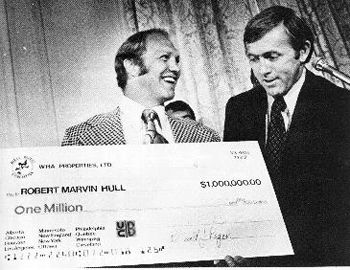
Hull had been a member of the Chicago Black Hawks of the NHL for fifteen seasons when the upstart World Hockey Association came looking for a star player to jump start the league and attempt to buy instant credibility, and found their man in Hull.
Coming off a 50 goal season with Chicago, when Hull jokingly told the WHA he'd jump for a million dollars, the WHA owners and league officials agreed to contribute to the cause and Hull was signed to a ten year, one million dollar contract. The WHA would not last the full ten years.

Once Hull was in the fold, other players soon followed, mainly in search of the higher paychecks offered by the new league, as Gerry Cheevers, Pat Stapleton, Ralph Backstrom, J. C. Tremblay and Rejean Houle also jumped leagues.
Despite an injunction filed by the Black Hawks which kept Hull out of the first 14 games of the 1972-73 season, the damage was done and eventually Hull became a full time Jet and the WHA was off and running.
Hull paid immediate dividends to the league and the Jets, raising the profile of the league and leading the Jets in scoring with 51 goals and 52 assists for 103 points, placing fourth in league scoring as the Jets finished atop the Western Division standings and leading Winnipeg to the Avco Cup Finals. Hull was also named the WHA Most Valuable Player in 1973, but it could be said that he had already earned that distinction by simply signing with the league in the first place!
While not every team and every building in the WHA was first class, the league debuted with teams in Cleveland, Boston, New York, Ottawa, Philadelphia and Quebec City in the east and Edmonton, Chicago, Houston, Los Angeles, Minneapolis/St. Paul and Winnipeg in the west, with the Boston franchise, known as "New England" taking the inaugural championship.
In order to compete, or more accurately try to gain an advantage, the WHA embarked on a policy of signing underage players, as NHL rules prohibited the signing of any player under the age of 20, which the WHA gleefully ignored, allowing it to scoop up players such as Wayne Gretzky, Mark Howe and his brother Marty, Mike Gartner and Mark Messier over the course of it's history.
For the next season, Hull was joined in the league by NHL legend Gordie Howe, who was lured out of retirement in order to play with his sons in Houston with the Aeros. Hull would top his goal output with 53, but the Jets would drop in the standings and get bounced in the playoffs in four straight by Howe and the Aeros.
The franchise shifting began in season two, with the New York Raiders being renamed the "Golden Blades" and then moving out of Madison Square Garden to save money, landing in New Jersey in a rink so bad the ice surface wasn't level as the puck would vanish from the goalies view as it sank into the dips of the waves on the ice surface! Worse, the visiting teams had to change out of their gear only after being bused back to their hotel. Additionally, the Philadelphia market was lost as the Blazers relocated out west to Vancouver, while Ottawa moved into Maple Leaf Gardens in Toronto. The season concluded with the Howe's leading the Aeros to the title.
The league expanded in 1974-75 with new teams being added in questionable markets such as Indianapolis and Phoenix, the New England franchise abandoned Boston for Hartford, the bad joke that was New Jersey moved to San Diego while the former Los Angeles franchise briefly stopped in Detroit before moving to Baltimore mid-season before folding for good. It would be the very first franchise to fold completely in the league, setting the tone for what was to follow, as Chicago was lost for good after the season. At the conclusion of the season, Houston defended their title.
Cincinnati was added to the league, along with Denver, but the Franchise shifting continued in 1975-76, as the brand new Denver club moved to Ottawa mid-season and then quit after 41 games and the Minnesota Fighting Saints called it quits after 59 games. Meanwhile, Vancouver moved inland to Calgary and Winnipeg claimed their first championship.
The league continued to press on in 1976-77, but the hopes of lasting long enough for a merger with the NHL started to become the goal, as the league, which once had teams in New York, Chicago, Los Angeles and Philadelphia, now had teams in Birmingham, Cincinnati, Indianapolis, Phoenix and San Diego.
The unsettled nature of the league continued as Cleveland moved to St. Paul but failed to last the whole season. Toronto moved to the deep south to Birmingham. Quebec won their only championship that season.
San Diego, Calgary and Phoenix failed to answer the bell for the 1977-78 season as the league shrunk down to only eight clubs and the Jets won their second championship.
Long time franchise Houston threw in the towel after the 1977-78 season, leaving the final WHA season with seven clubs, beginning with Indianapolis, who folded after 25 games, leaving just six teams to stagger home to the finish line - Cincinnati and Birmingham plus mainstays Edmonton, New England, Quebec and Winnipeg, who won their second consecutive, and third overall, title.
Following the conclusion of the seventh season of the WHA, a merger agreement was struck, which allowed Edmonton, Quebec, Hartford and Winnipeg to join he NHL as expansion teams, with some rather strict provisions that cost them millions of dollars and many of their players, leaving them at an enormous competitive disadvantage, which some clubs dealt with better than others, primarily the Oilers, who won the Stanley Cup just five seasons later, their first of five in seven seasons.
Despite the history of unstable franchises, the WHA left a legacy of entertaining, wide-open play, higher player salaries and the acceptance of European players.
Today's featured jersey is a 1972-73 Winnipeg Jets Bobby Hull jersey as worn by Hull in the preseason prior to the first ever WHA regular season when they changed to jerseys with the same first year only crest, but with a different striping pattern.
The regular season set of jerseys were notable for their contrasting nameplates, the blue jerseys having white nameplates with red lettering and the white jerseys sporting red nameplates with white letters.
For the second season the Jets adopted their more familiar round logo, which survived the entire lifespan of the WHA and lasted until the 1989-90 NHL season before undergoing a modernization.
photo courtesy of Classic Auctions
Our first video is an interview with Hull on the occasion of the Jets retiring his jersey #9 in 1989.
Our next video features other WHA players giving their scouting reports on Hull followed by Hull's thoughts on joining the league. Notice the white nameplates with red lettering on the Jets first year jerseys.
Labels:
Hull Bobby,
WHA,
Winnipeg Jets
Subscribe to:
Comments (Atom)



